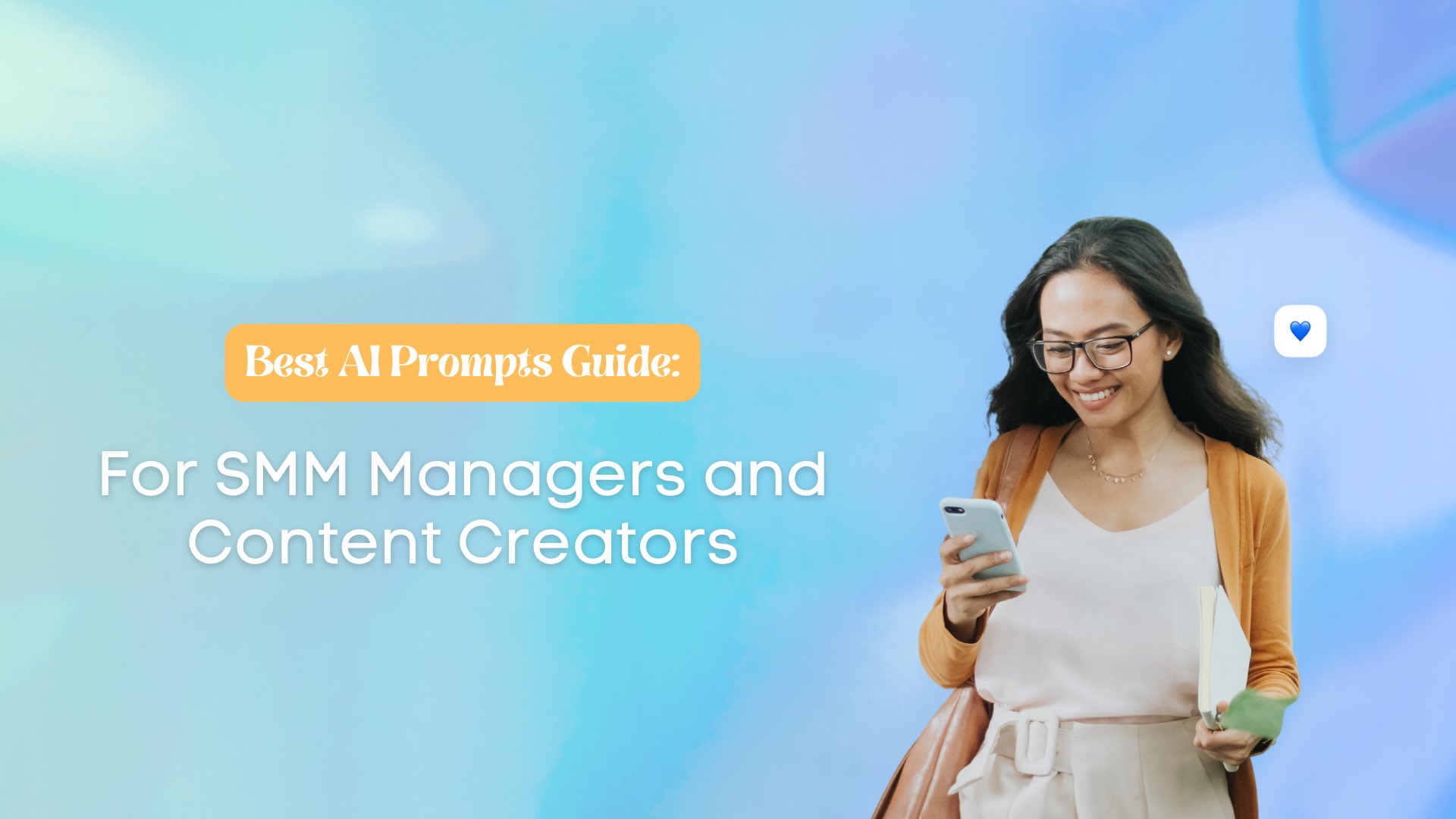The social media marketing world is shaken to the core, and I only have two words to explain it:
AI prompts.
Need a fun social media post?
Want an optimized ad copy for your FB ad campaign?
How about creating an image for your IG post?
With the right AI prompt ideas, any type of content you need (almost) can be done for you in a snap.
What you’ll learn:
- What are AI prompts?
- What are AI prompt examples?
- The structure of AI prompts
- 35 AI prompts for social media managers and content creators
- How to use AI prompts to supercharge your social media strategy
- Customers Also Ask
- Breeze through your social media campaigns with AI
What are AI prompts?
AI prompts are user inputs to AI tools like ChatGPT, Bing AI, and Canva’s “Text to Image.” They contain instructions, parameters, details, and—in some cases—reference assets that enable AI tools to generate content.
Long story short, you use prompts to tell AI tools what to do.
Why would you even consider AI if you can hire more manpower?
Here are a few mind-blowing reasons:
- Save heaps of time: It may take hours for a human graphic designer to produce a professional-grade infographic. With AI apps, all you need is a good prompt and a few seconds.
- Reduce costs: AI tools don’t have hourly rates—and you can get them working 24/7. They also don’t care about additional benefits or bonuses, either.
- Mix up your editorial style: Working with the same people in your creative team for years can stagnate innovation. With AI tools, you can bring fresh ideas that reinvent your social media publishing and content creation activities.
- Focus on more important matters: With AI automating repetitive, grindy work in the background, your team can dedicate more of their time to more meaningful tasks. Social media managers, for example, can focus on actually managing accounts rather than writing social media posts for hours.
Despite the huge upsides, AI-generated content has a few flaws.
Things to consider before using AI prompts
AI tools generate redundant and borderline duplicate content without highly specific prompts.
Remember, some companies also already employ AI-generated content detectors. You don’t want to be seen as the social media manager or agency that churns out AI prompts all day.
Additionally, there’s still a long list of SMM and content marketing tasks that AI can’t handle.
You just can’t order an AI to analyze your Instagram following list order to create personalized social media greetings. And when it comes to content creation, most AI tools aren’t advanced enough for complex tasks related to video editing.
Some tools may be capable of AI-generated video captions. However, most AI tools are incapable of perfectly cropping videos to the ideal Instagram Reels dimensions.
At the end of the day, AI tools are just as useful as the AI prompts they’re fed.
That said, you need to learn the correct AI prompts to make them useful for social media or digital marketing in general.
What are AI prompt examples?
To better understand how AI prompts work, let’s take a quick look at some examples:
1. Information prompts
If you ever Googled for something, you already know how this works.
Just ask a question, fire away, and wait for the AI tool to do its magic. This is a basic feature that most AI tools have, even if they don’t expressly advertise it.
For example, the Vista Social AI Assistant can answer almost anything—even mathematical questions with ease. You just need to provide a prompt that includes every detail.
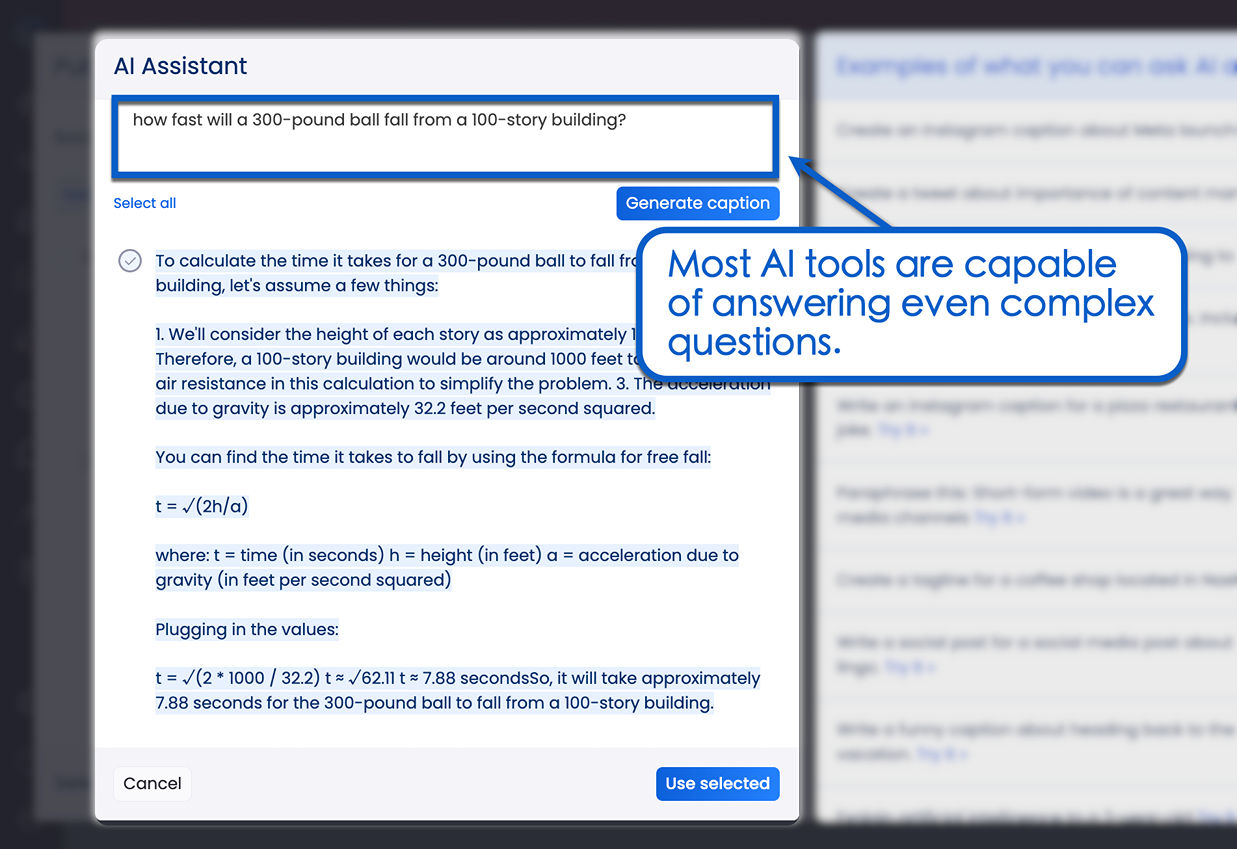
2. Instruction prompts
Most—if not all—marketers that use AI tools rely on instructional prompts to generate useful assets.
Just like information prompts, instructional prompts can be as detailed as you want. Doing so enables the AI to generate more unique and relevant responses.
Below are a few examples from our very own AI Assistant:
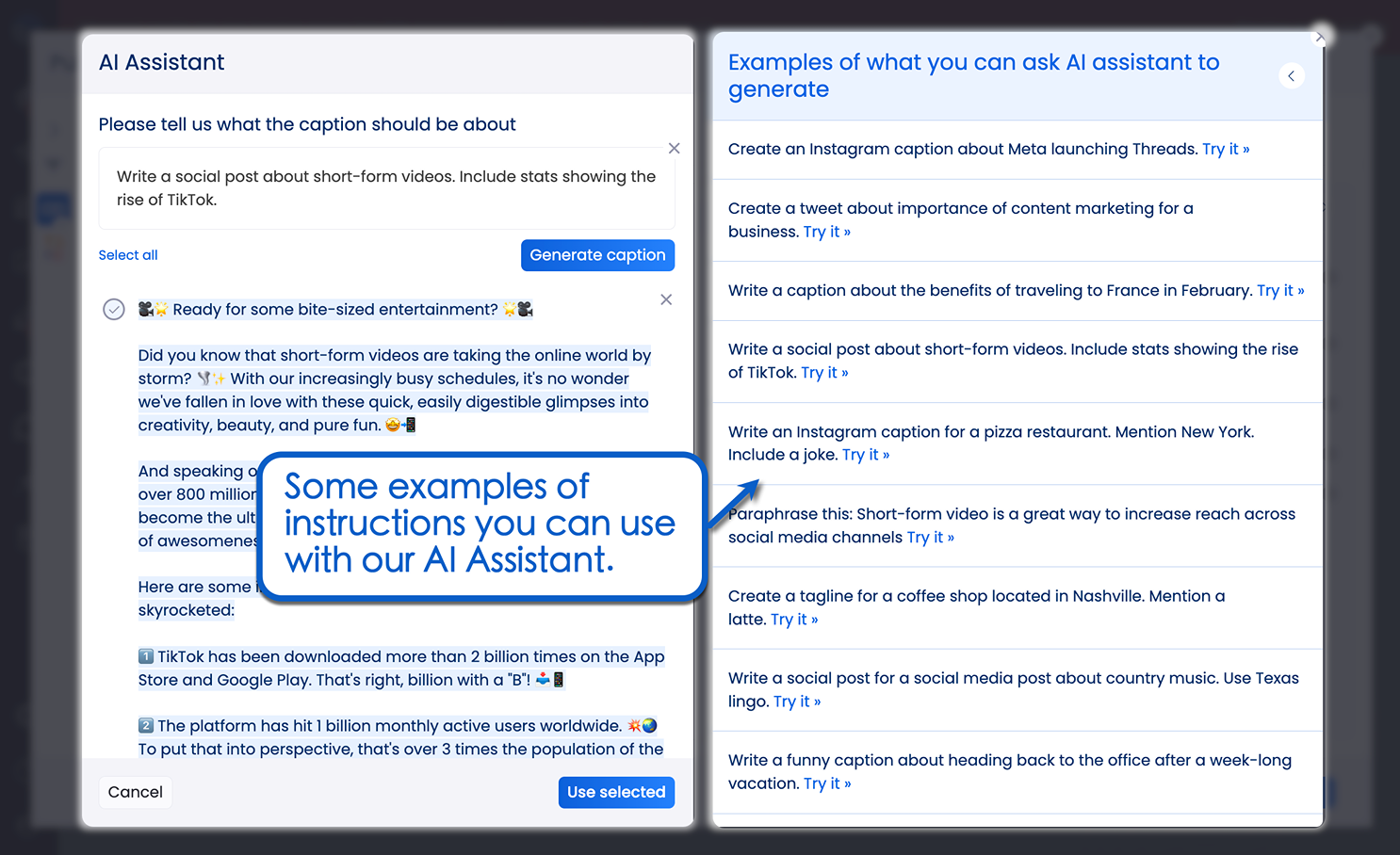
3. Image prompts
Some AI prompts can render new images based on picture attachments.
DALL-E by OpenAI, for instance, can generate content through image uploads.
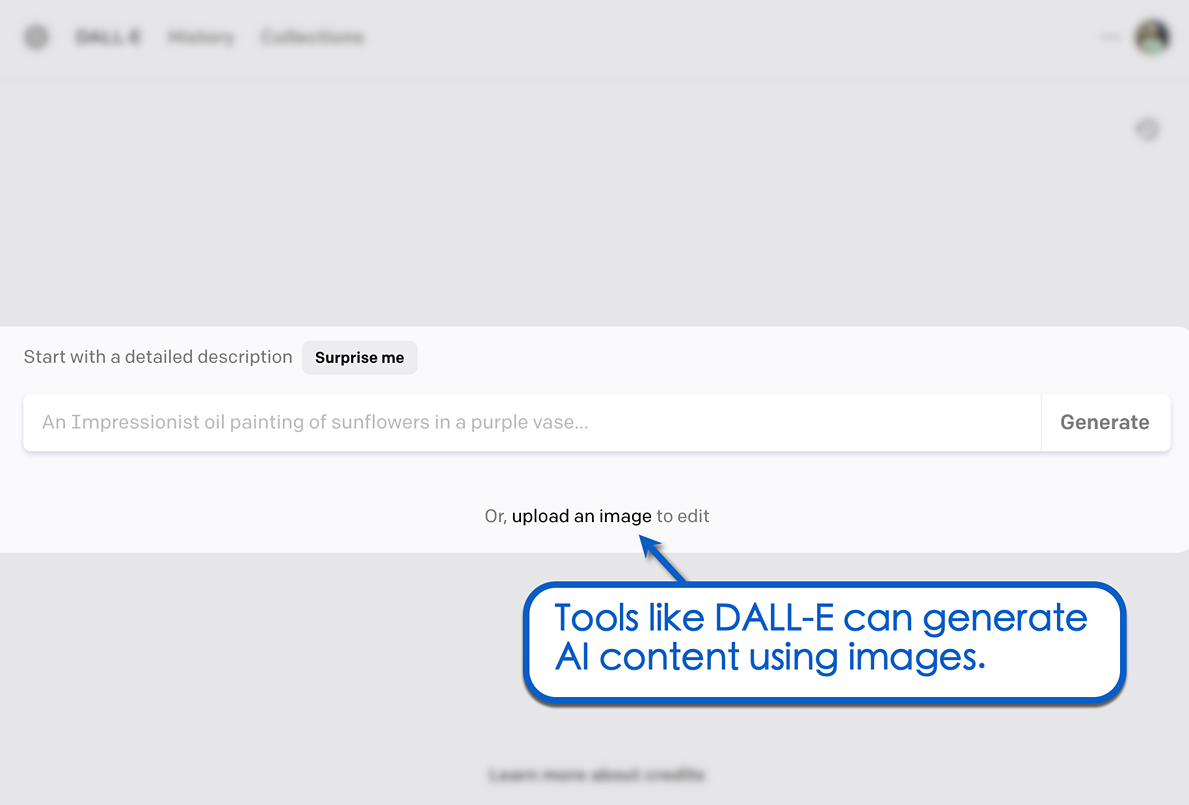
Image Source: Labs.OpenAI.com
Image prompts unlock a ton of possibilities for content creators. You can turn sketches into shareable graphics, create AI-based avatars, revamp your logos, and more.
Must read: 120+ Photo Dump Captions for IG: Best Captions for 2023
The structure of AI prompts
It’s worth repeating that the quality of AI-generated content depends entirely on the prompts used.
To help you reap the full benefits of AI tools, let’s take a closer look at the structure these prompts.
AI prompt ideas for text
When generating AI-based text, there are five essential parts of a good prompt:
- Tone: What do you want your AI-generated text to sound like? Do you want to use a casual, approachable voice—or a formal, authoritative, and business-y tone?
- Main prompt: All AI prompts include a question or instruction to get the ball rolling.
- Keywords or hashtags: You can tell AI tools to mention a specific keyword or hashtag straight-up. This can immediately elevate the relevance of AI outputs.
- Target audience: Specifying your target audience is an easy way to optimize your AI-generated text’s tone and language. You may include this at the end of your prompt (e.g. “write for students”).
- Additional details: Don’t hesitate to sprinkle additional details to make your AI-generated text more unique and on-brand. Consider aspects like word count, CTAs, social media profiles, marketing objectives, and so on.
Here’s an example of a well-structured AI prompt and what our AI Assistant came up with:
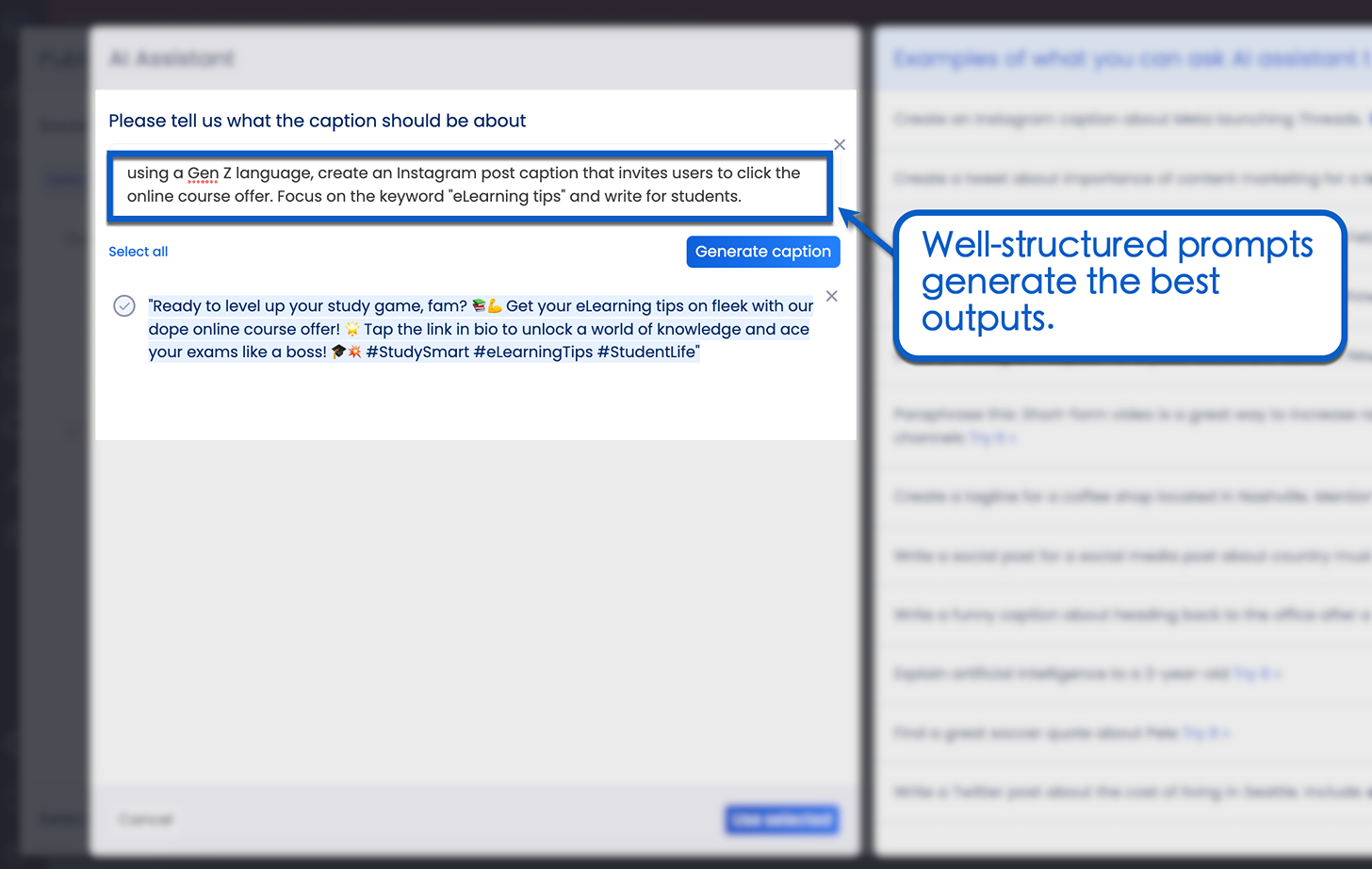
AI prompt examples for images
AI prompts for images can be just as detailed as prompts for text.
There are no hard rules on prompt length; for example, Midjourney is best with around a 60-word prompt, while Stable Diffusion works well if you keep AI art prompts at 380 characters.
If you throw in too much detail on AI image makers, it might trip up the generator.
But that doesn’t mean you can’t experiment a bit; just play around with it, and you might discover something new.
Also, ensure you use clear and specific details for AI art prompts. This will help you get consistent results.
Poetic or vague words may lead to unexpected results. You can always try mixing and matching clear with poetic language, though, combine them depending on your desired outcome.
With more practice and experience, you can play with your AI art generator prompts, including their structure, size, and style.
But, first, let’s drill down in understanding the key parts.
In most cases, only three elements matter: subject, style, and details.
- Subject: This part is a bit self-explanatory. What should be the focus of the image? Are you creating a portrait of an animal or an office scene with a couple of workers? Besides what’s in the image, you can also include what the subject’s doing (e.g., sprinting, glancing at the sky, fishing, etc.), the way they’re acting (e.g., with courage, in fright, or joyfully), or the mood of the scene (e.g., nostalgic rainy morning, gloomy scene by the patio, risky twilight peaks)
- Style: Do you need to create a 3D, Pixar-style image? Would you prefer a painting in the style of Van Gogh?
- Details: The more details you include in your AI image prompt, the better. Include things like the time of day, lighting, weather, background, and so on.
Although most AI image generators recommend being as detailed as possible, each model reads into things differently.
So, experiment with your AI prompt ideas and flesh out as much detail as you need—that way you can have a cooler and more interesting outcome.
Don’t worry if you think your prompt is becoming too long or complicated. Focus on describing the image in your head, what the subject is doing, and how the scene plays out.
Here’s a quick example using the prompt: “Portrait of a writer in front of his laptop in 3D Pixar-style working at night.”
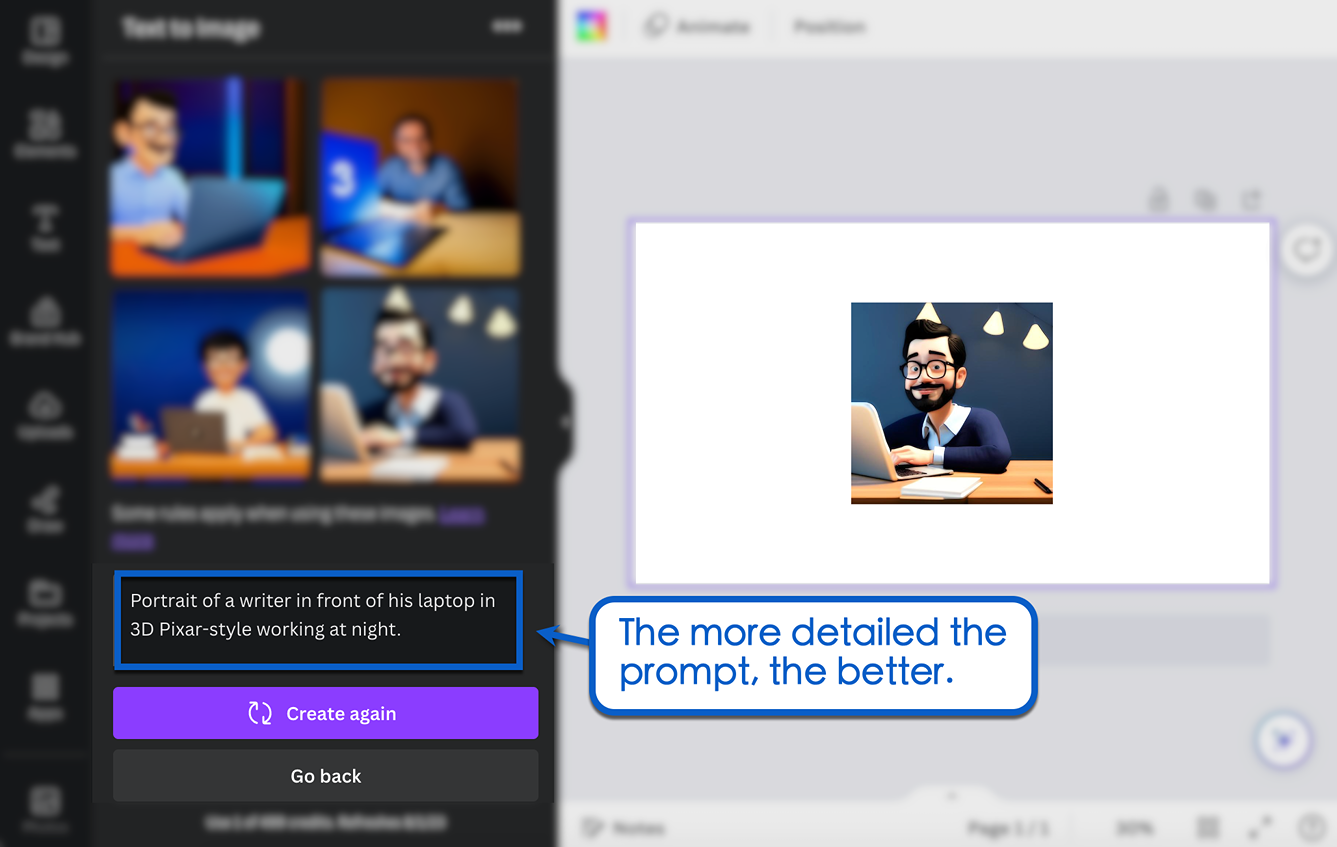
Image Source: Canva.com
35 AI prompts for social media managers and content creators
Great, you should now have a good idea of how AI prompts work.
To give you some ideas, we compiled a list of useful AI prompts you can use for content creation.
Feel free to switch things around—use new keywords, change colors, or even use different tools to make the content unique. It’s also ideal to generate multiple outputs using the same prompt until you find the one you like.
Let’s get started.
AI prompts for images
1. Generic Facebook post image
Prompt: “A photorealistic image of a smartphone with the Facebook logo floating from the screen. White background in a well-lit office.”
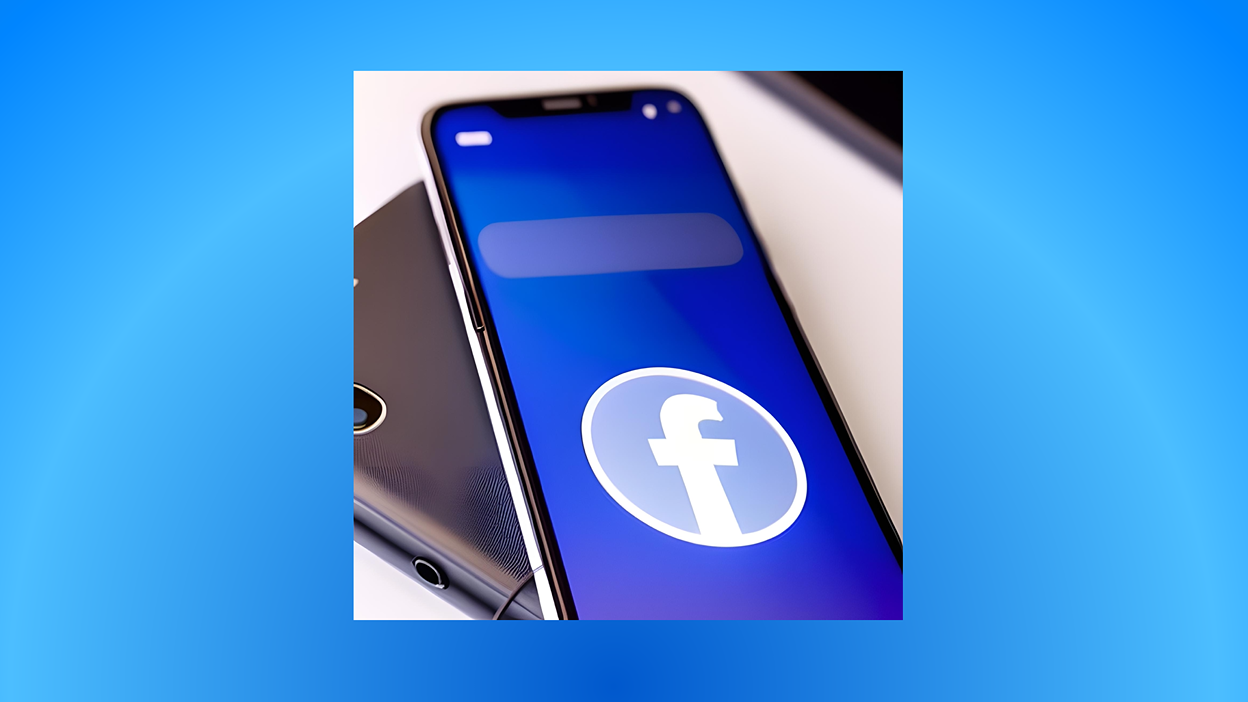
Tool: Canva
2. Team collaboration leads to positive results
Prompt: “A realistic office scene with three excited employees looking at a computer. The office walls are green.”

Tool: Canva
3. Marketing superhero
Prompt: “A masked cartoon superhero woman with a red outfit standing on top of a building. Computers and stacks of money in the background.”
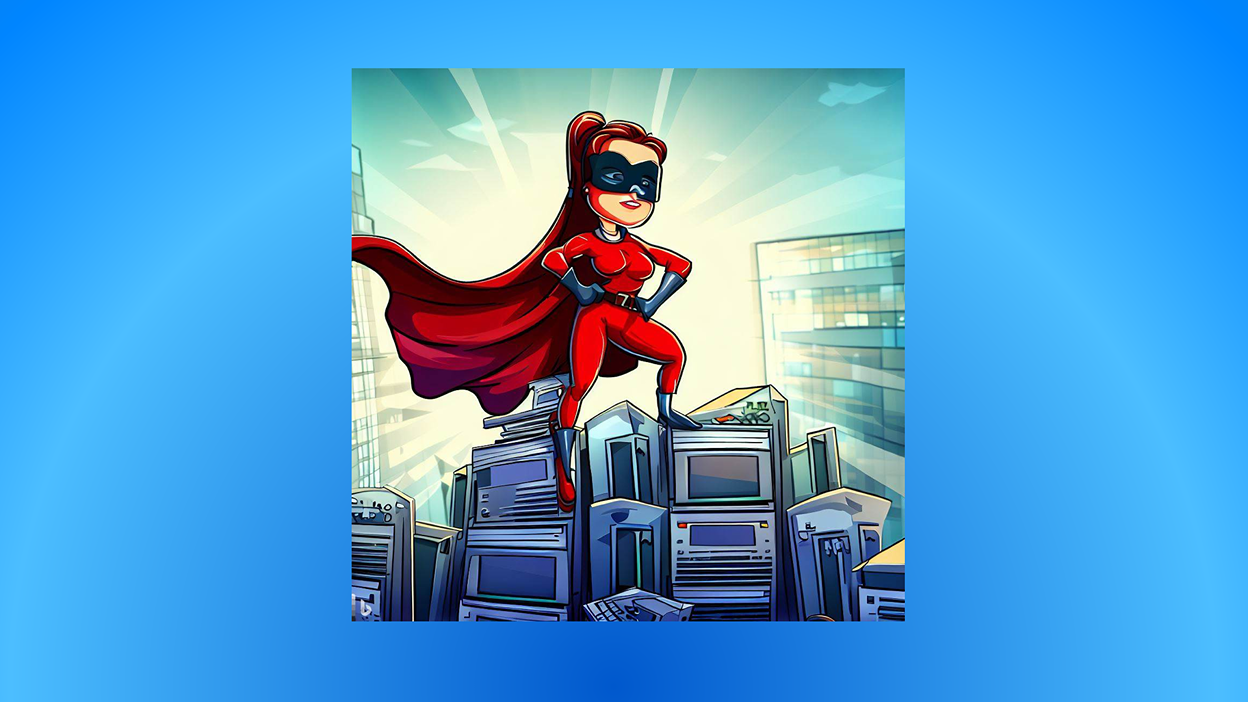
Tool: Bing AI Generator
4. World full of money
Prompt: “A globe made out of dollar bills sitting on a desk under a spotlight. Dark room.”

Tool: Bing AI Generator
5. Music streaming is bliss
Prompt: “A cartoon woman listening to music by the window while it’s raining outside.”
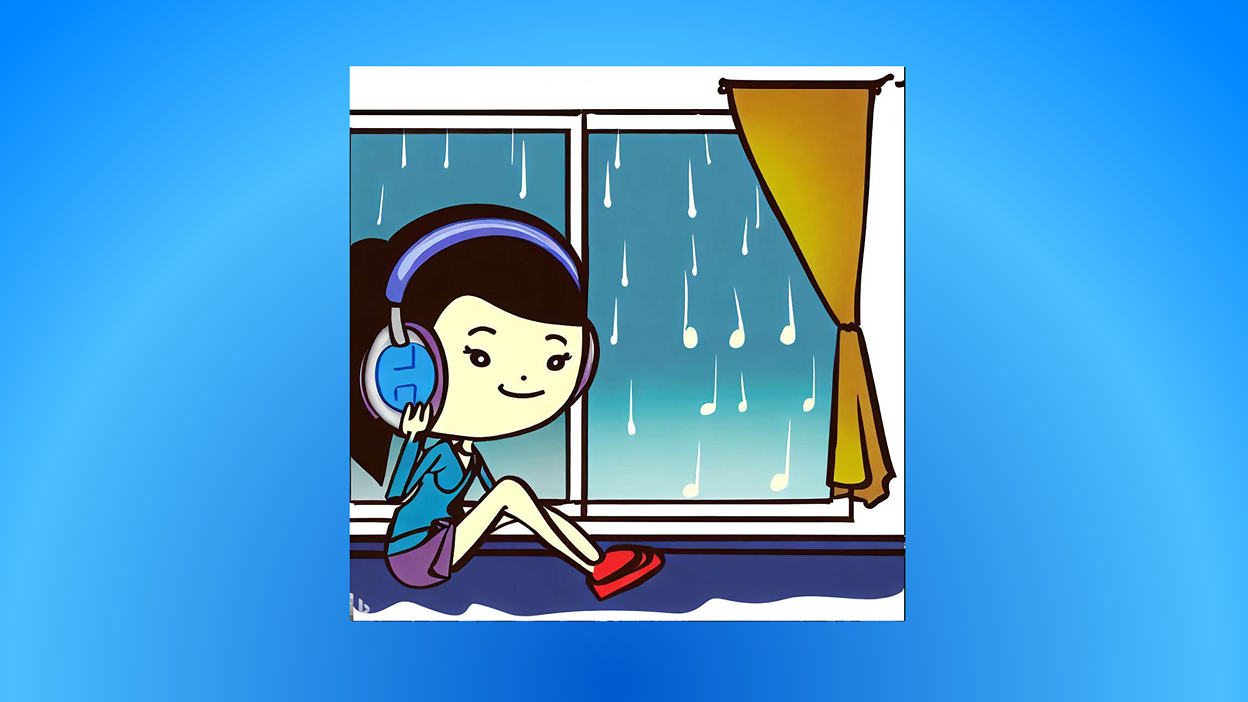
Tool: Bing AI Generator
6. Investing money
Prompt: “A watercolor art of a plant with fruits made with gold coins and dollar signs. Money bags in the background with a stock chart.”

Tool: Bing AI Generator
7. A book about getting likes
Prompt: “A small realistic book with thumbs-up icons on the cover on a desk in a purple room. Isometric view.”

Tool: Bing AI Generator
8. Love to play videos
Prompt: “Abstract red heart with a play button at the center. Orange gradient background with polka-dot pattern.”
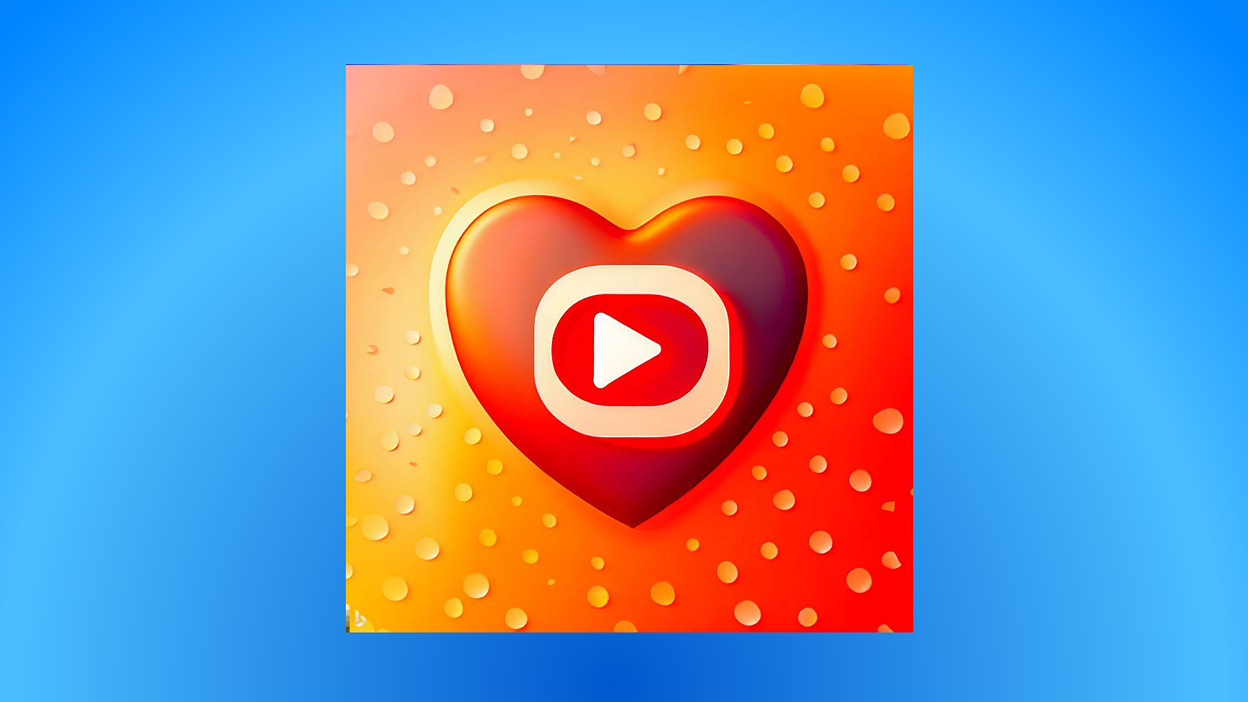
Tool: Bing AI Generator
9. Racing against machines
Prompt: “Duotone infographic of a tired runner racing against a robot. The floor is filled with obstacles.”

Tool: Bing AI Generator
10. Getting some data done
Prompt: “Top-down view of a desk with shapes, lines, and other parts of infographics. 2D flat design.”

Tool: Canva
11. Abstract flower painting screams psychology
Prompt: “Abstract oil painting of a flower with colorful petals swirling from the center to the corners of the canvas.”
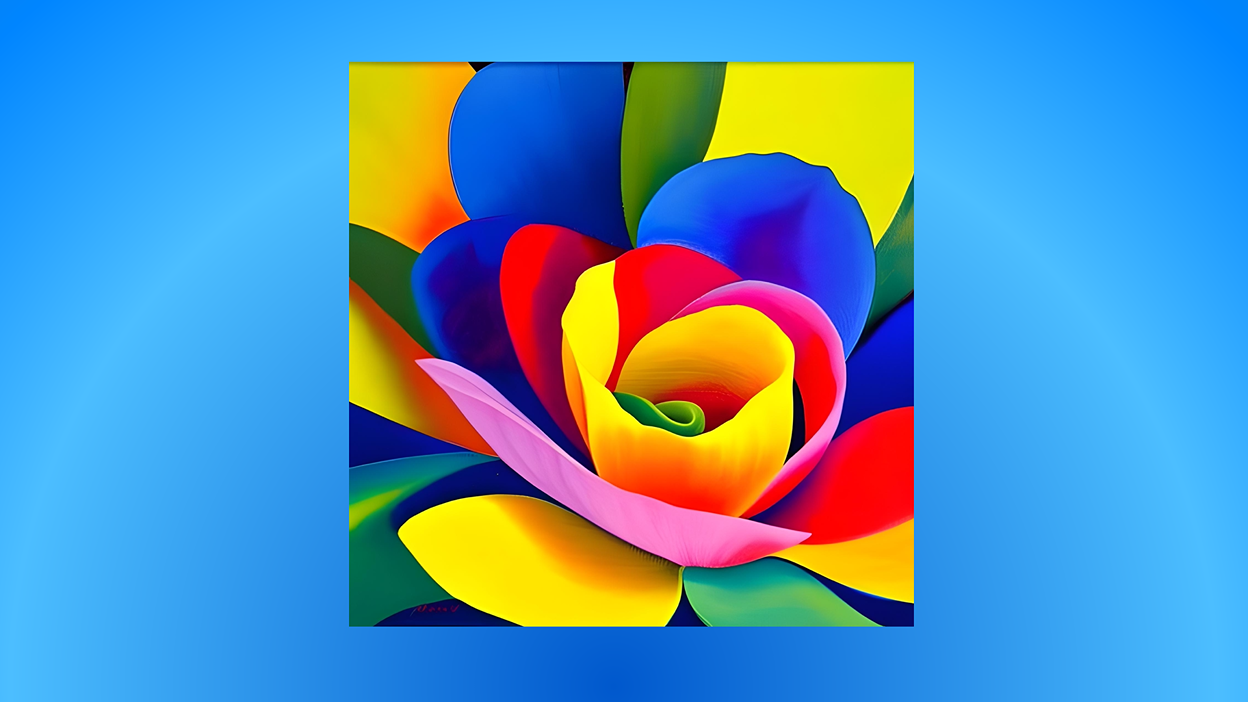
Tool: Canva
12. Looking like a retro anime boss
Prompt: “Retro anime portrait of a man/woman in a suit standing and holding a suitcase. On top of an elevator.”

Tool: Bing AI Generator
13. A factory of AI machines
Prompt: “Flat design machine factory that creates robots. Dozens of robots exit the factory in a straight line.”
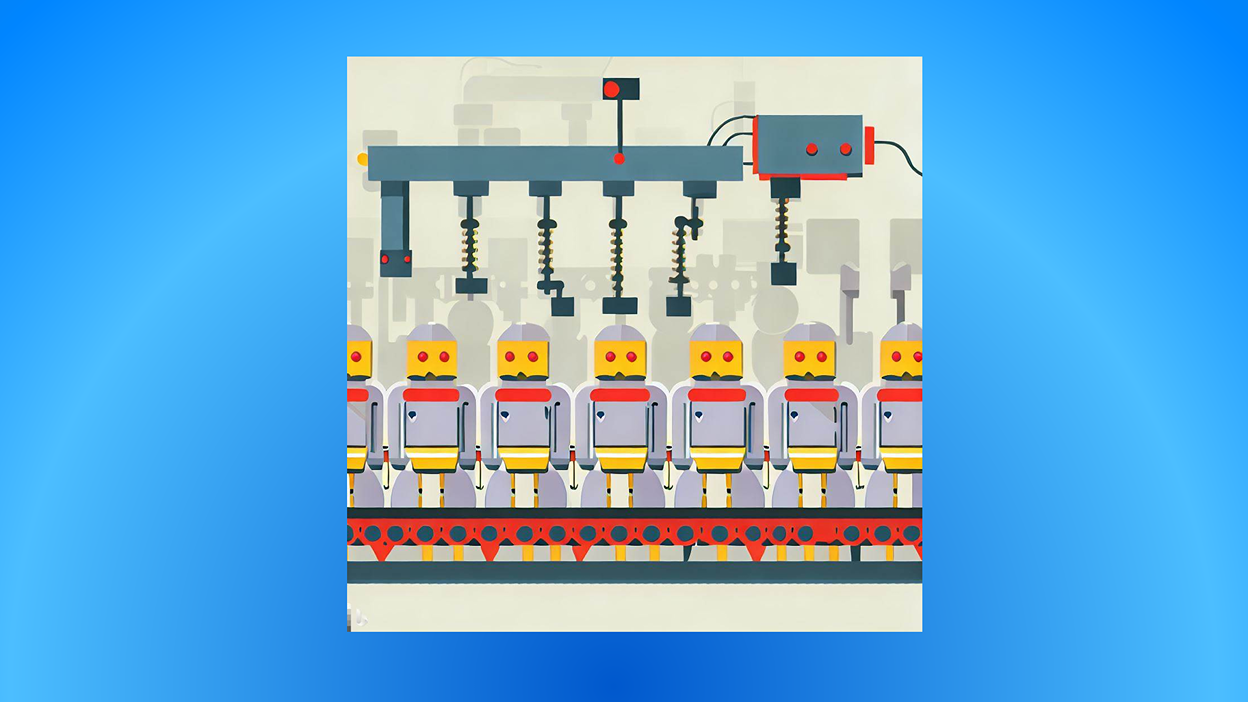
Tool: Bing AI Generator
14. It looks busy at the top
Prompt: “Aerial long exposure shot of a highway with cars passing by. Shot at night in the middle of a city.”

Tool: Bing AI Generator
15. Augmented with machines
Prompt: “Anime human with robot parts running through the crowd. Duotone shot in a busy street.”
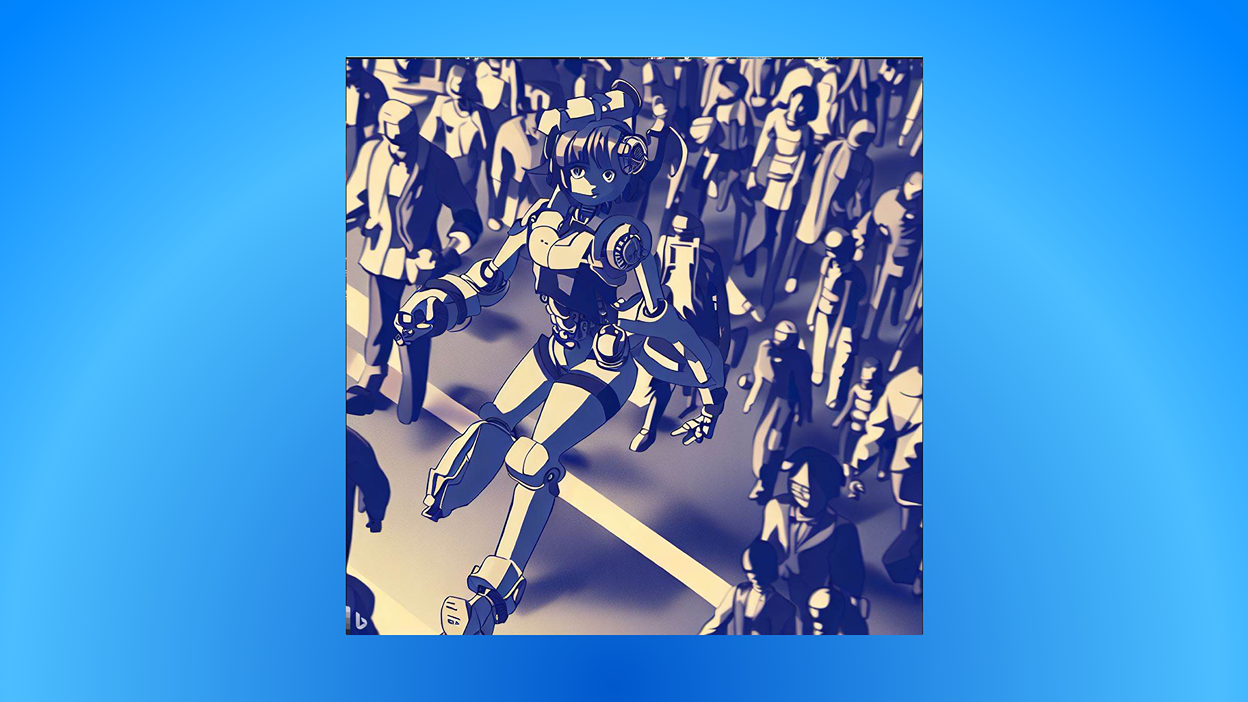
Tool: Bing AI Generator
16. Hummingbird that loves books
Prompt: “A portrait of a green hummingbird perched on top of a stack of books. Plain background.”
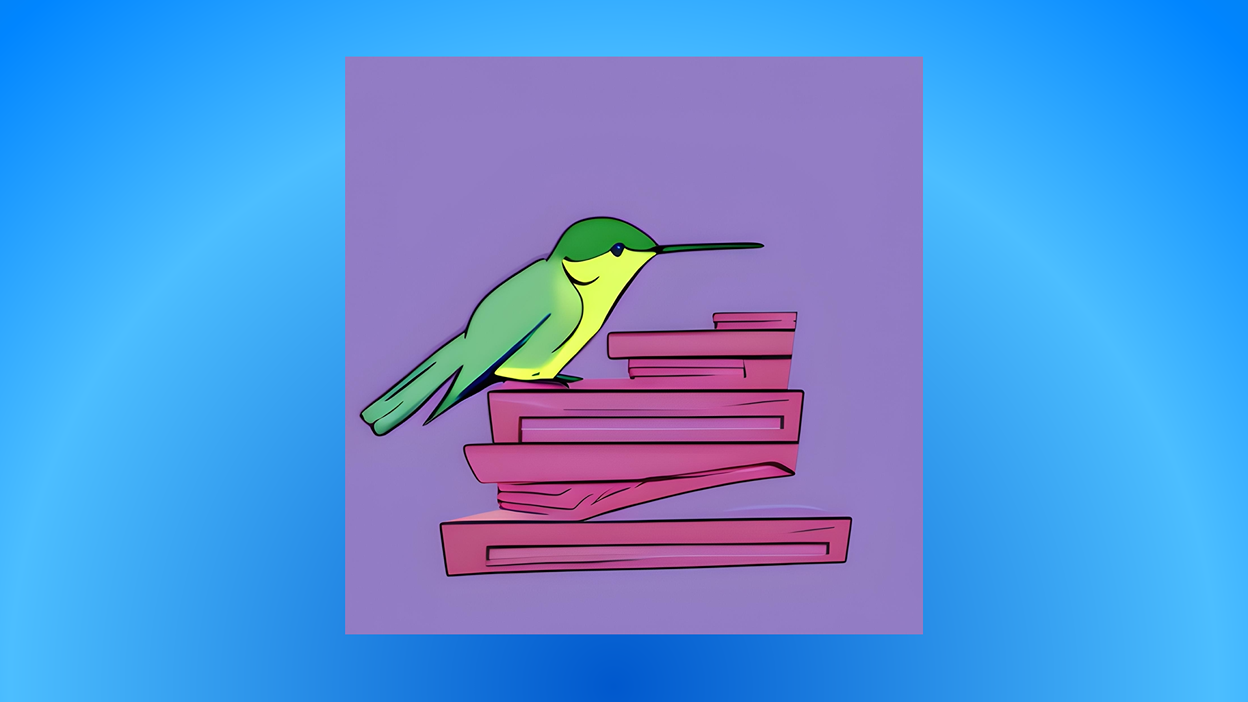
Tool: Canva
17. Fancy way to say that you send emails
Prompt: “Digital art of a 3D laptop with a mailing envelope floating away from the screen. Abstract duotone background.”

Tool: Bing AI Generator
18. The life of a digital artist
Prompt: “An isometric drawing of an artist painting an iPad with basic colors. Plain ink parchment background.”
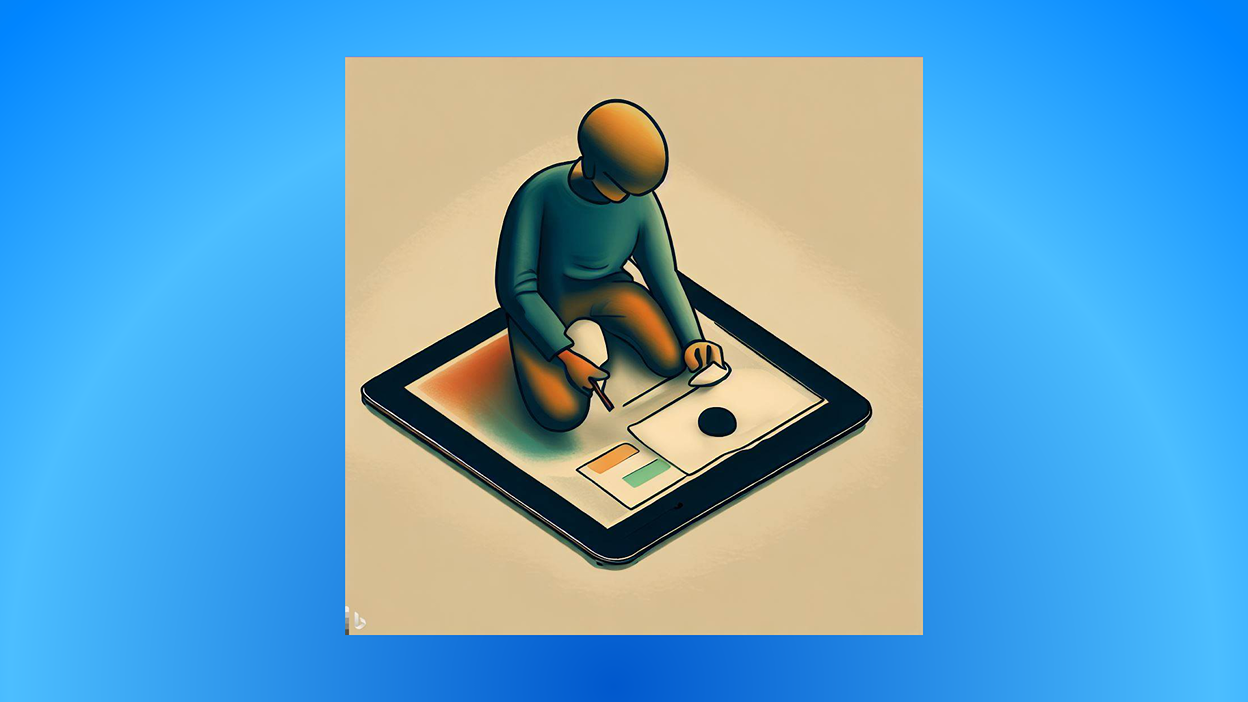
Tool: Bing AI Generator
19. Done deal
Prompt: “3D Pixar-style entrepreneurs shaking hands in an office.”

Tool: Bing AI Generator
20. Relaxation
Prompt: “Flat design illustration of a woman meditating with a cup of tea. Duotone style, isometric view.”

Tool: Canva
AI prompts for text
21. Paraphrase this in another style
Prompt: “Paraphrase this in … while focusing on the keyword …”
Example: “Paraphrase this in Gen Z speak while focusing on the keyword ‘student debt’: Pay off student debt in 10 proven personal finance strategies.”
22. Write a tweet
Prompt: “Write a tweet promoting the launch of … and encourage users to claim a free trial.”
Example: “Write a tweet promoting the Social Media Masterclass and encourage users to start a free trial.”
23. Turn stats into key takeaways
Prompt: “Mention that … and discuss why readers should act now.”
Example: “Mention that 40% of users leave a slow website and discuss why readers should act now in 10 sentences or less.”
24. Create a quick list
Prompt: “Name the most important … and briefly explain them.”
Example: “Name the 10 most important SEO ranking factors and briefly explain them.”
25. Write Instagram captions
Prompt: “Write an Instagram post caption for a … Mention … and insert a joke.”
Example: “Write an Instagram post caption for a social media agency. Mention Toronto, Canada. Insert a joke.”
26. Explain a concept for a target audience
Prompt: “Explain the concept of … for …”
Example: “Explain how AI image generators work for pre-schoolers.”
27. Look for information
Prompt: “Give me a statistic/fact about …”
Example: “Give me a crazy stat about dolphins.”
28. Write jokes
Prompt: “Tell me a good joke about …”
Example: “Tell me a good joke about freelance writers.”
29. Inspirational quotes
Prompt: “Please share an inspirational quote for …”
Example: “What is a good inspirational quote for single dads.”
30. Write an intro for an article
Prompt: “Write an intro/summary for the following article … while prioritizing the keyword …”
Example: “Write a 5-sentence intro for the following article while prioritizing the keyword AI writers: (paste the whole article or outline here)”
31. Write business taglines
Prompt: “Create a … tagline for a … “
Example: “Create a witty tagline for a social media management agency based in Toronto, Canada.”
32. Create title ideas
Prompt: “Create a … title for the following article … ”
Example: “Create a 6-word, captivating title for this article: (paste article or outline).”
33. Write social media ad copies
Prompt: “Write a … Facebook ad copy for a … ”
Example: “Write a 2-sentence Facebook ad copy for a Facebook management service.”
34. Craft personalized emails
Prompt: “Create an email pitch that sells … for a potential client named … which is a … ”
Example: “Create an email pitch that sells an SEO link building service for a potential client named Oliver Smith, which is an apparel business based in UK.”
35. Respond to comments
Prompt: “Respond to this comment in a … tone and … ”
Example: “Respond to this comment in a professional tone and invite them to reach out via the phone number +123456: (paste comment here).”
How to use AI prompts to supercharge your social media strategy
Ready to use AI prompts to accelerate your social media campaigns?
First things first: you need the right tools.
The good news is, all the features you need are available via Vista Social (and more).
Here’s a quick tutorial for all these features:
Launch the Vista Social AI Assistant
The Vista Social AI Assistant will help you create brilliant text content even with
To use this feature, log in to your dashboard, click ‘Create,’ and select ‘New post.’ From there, click the robot icon below the text editor to launch the AI Assistant.
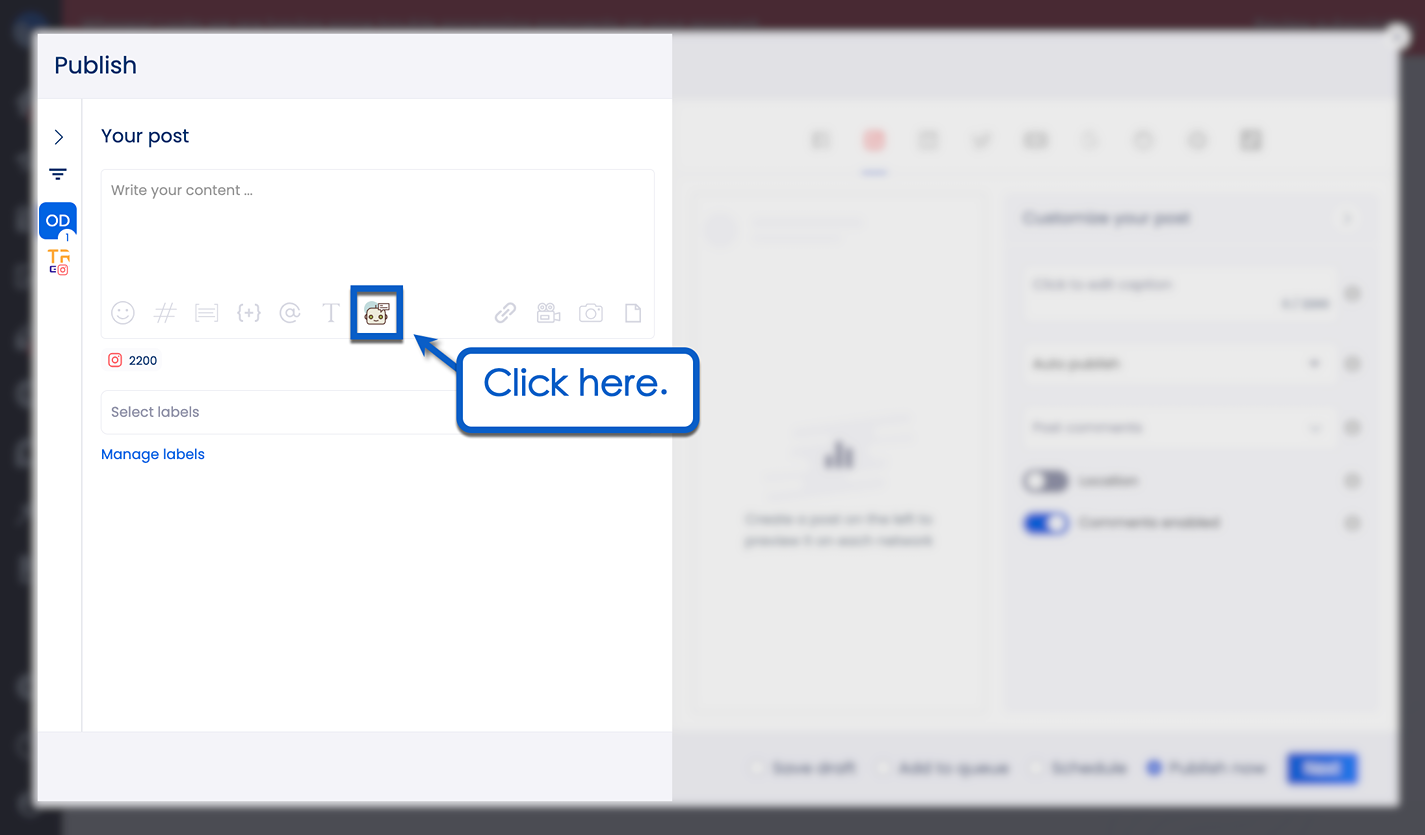
The Vista Social AI Assistant starts you off with a handful of must-try prompts. Of course, you can use the form to the left to enter unique prompts right off the bat.
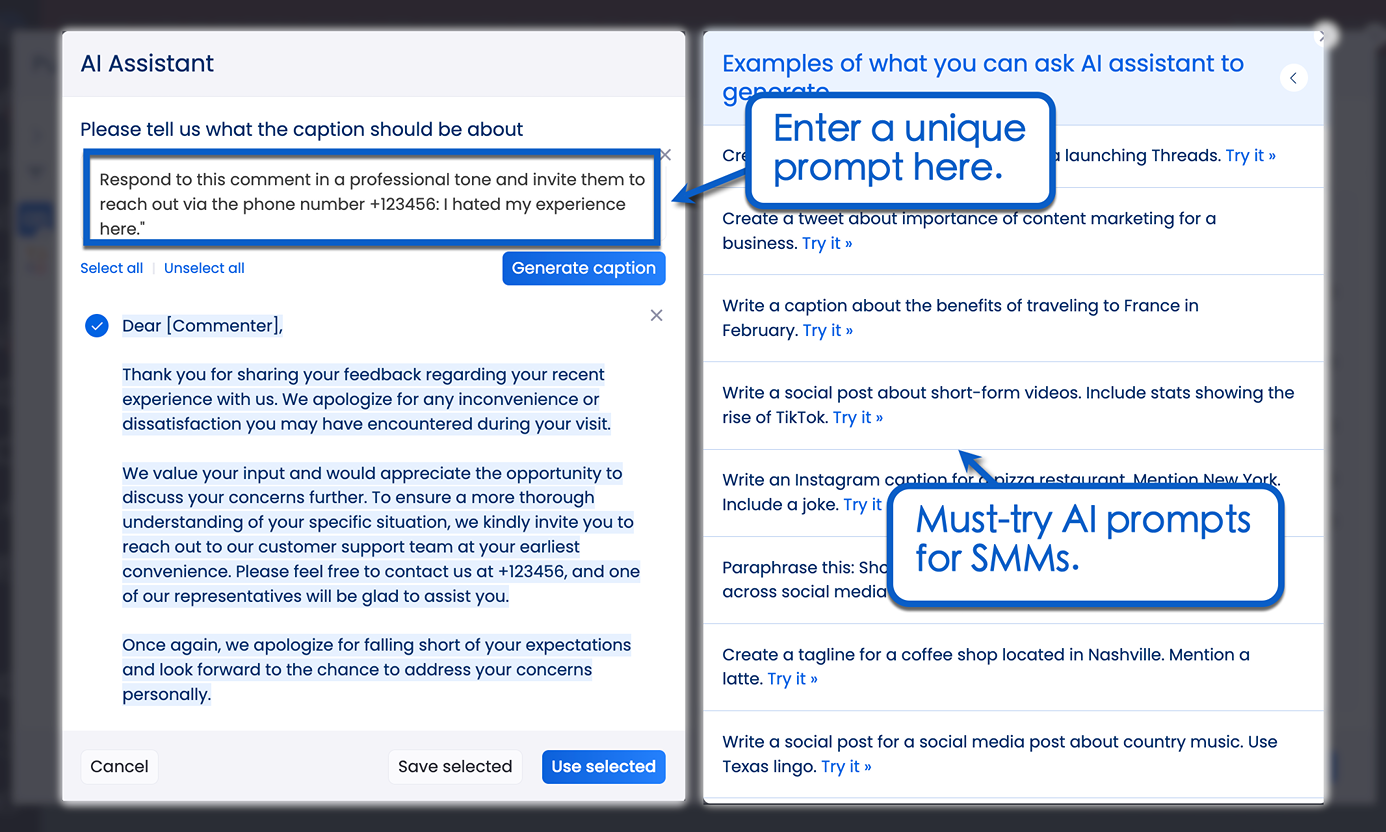
Select the checkbox of the AI-generated text you want to use and click ‘Use selected.’ Vista Social will automatically paste the content into the publisher—ripe for scheduling!
Take note that you can also use the AI Assistant to respond to messages and comments. Just head to your inbox to get started.
Use the Canva integration
Good news: you can use Canva’s AI image generator straight from the Vista Social publisher.
Simply click the camera icon and select ‘Design with Canva.’ Select the content format you want to use to launch the Canva overlay on the same tab.
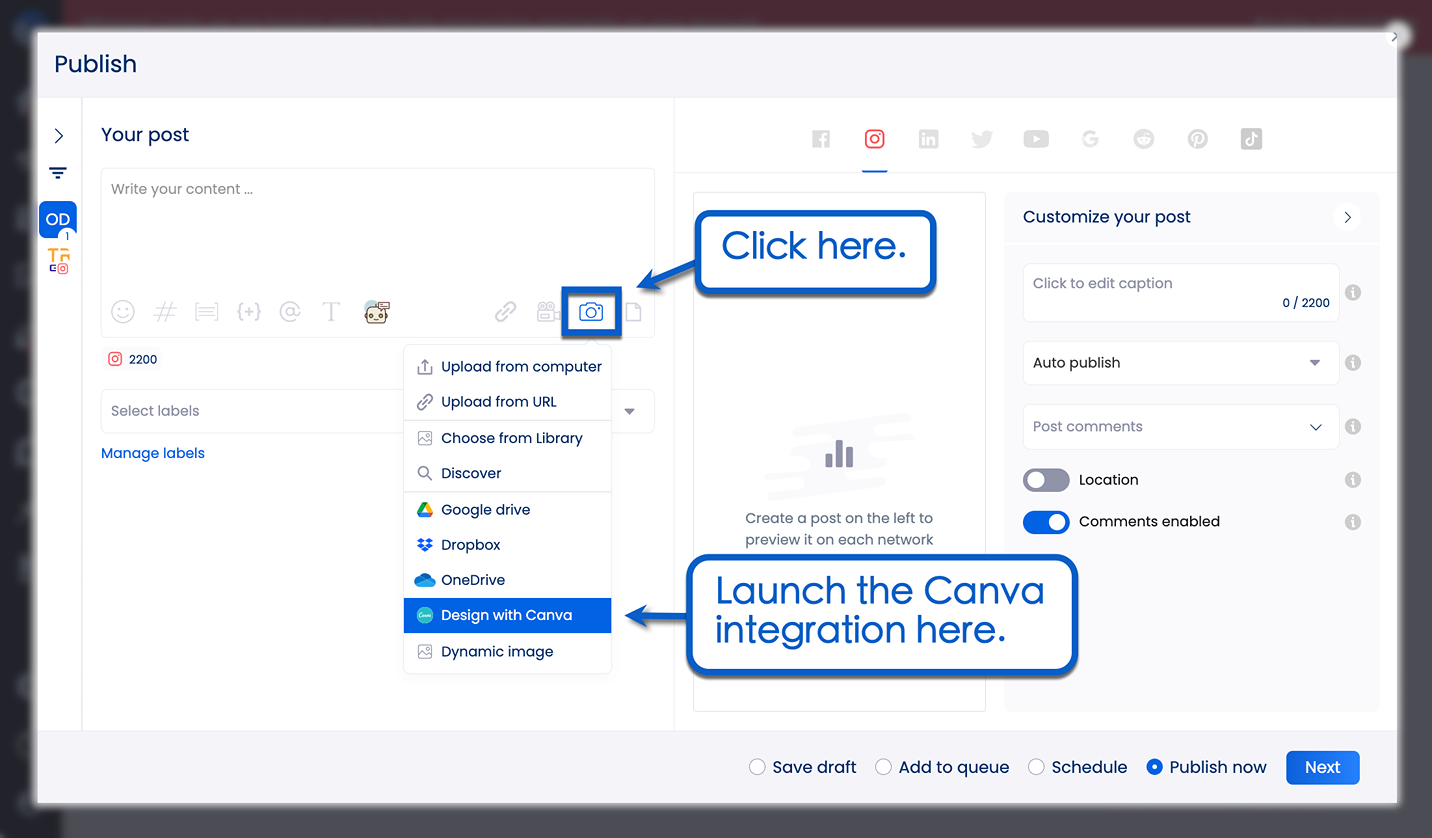
On the Canva overlay, go to the ‘Apps’ tab and look for the “Text to Image” app. Click on it to open the AI prompt form.
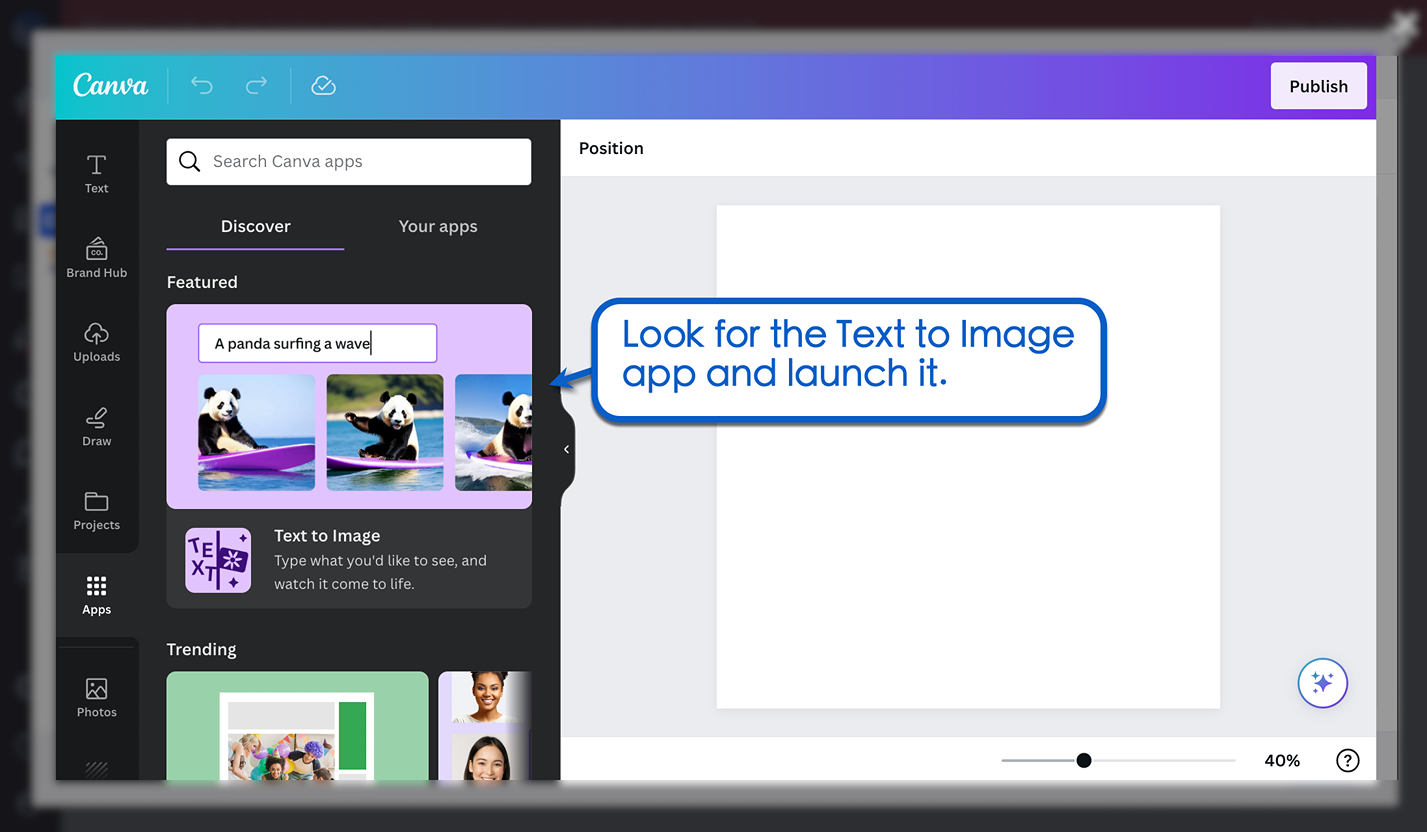
Lastly, enter your AI prompt into the input field and click ‘Create your image.’
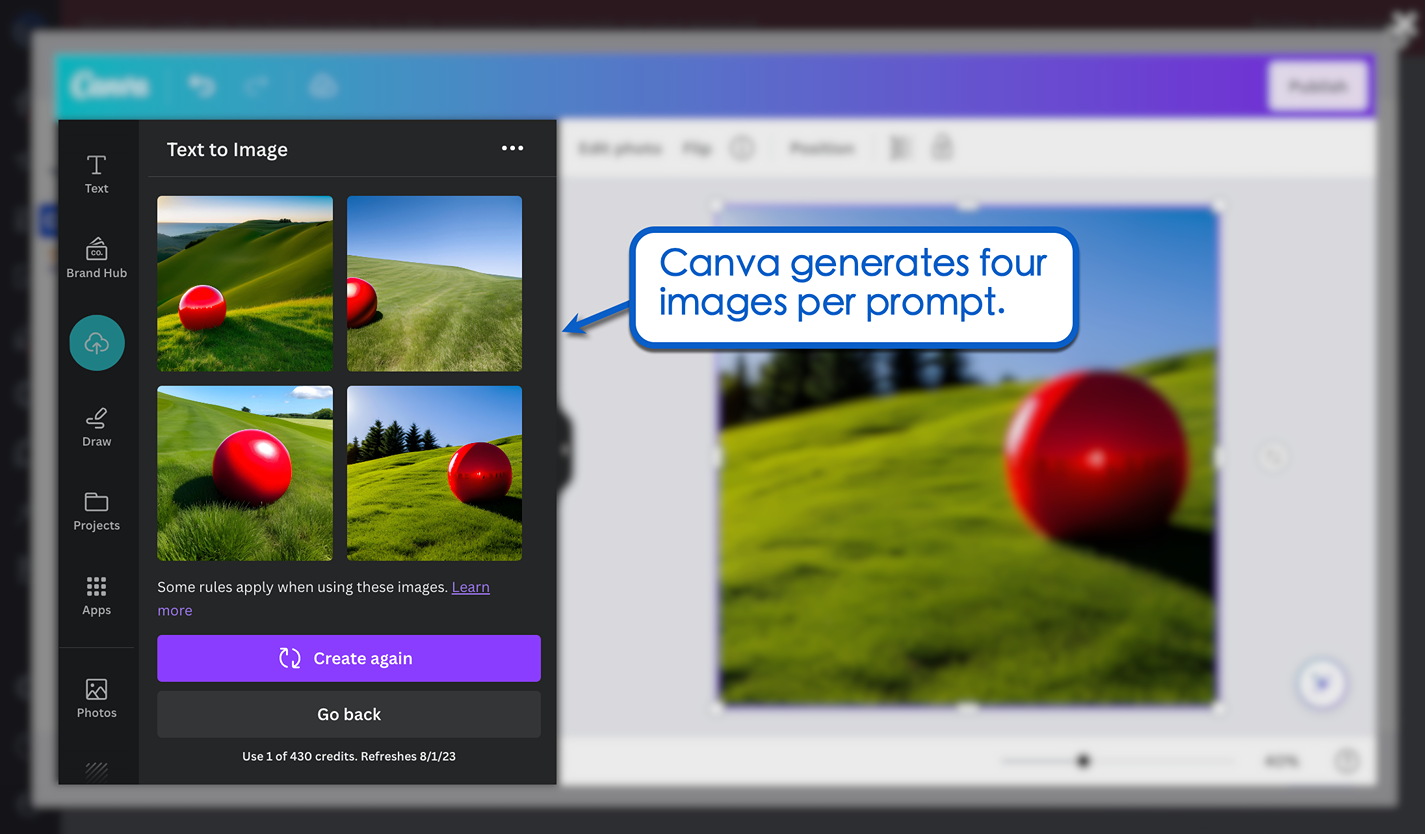
Canva generates up to four results per prompt. To generate new images, simply click ‘Create again.’
Customers Also Ask
What is a good prompt for AI art?
A good AI prompt for generating images includes a subject, style, and additional details. More detailed prompts usually generate higher-quality images.
How can I create my own AI art?
You can use free AI tools like DALL-E and Canva’s Text to Image to create AI-generated art using text prompts. These AI tools convert text-based prompts or instructions into visuals using the specified style (if any).
Is AI art legal?
Yes, AI art is legal and can be used for marketing purposes. Just remember that, in the United States, content generated by machines cannot be copyright-protected.
Breeze through your social media campaigns with AI
We said it before and we’ll say it again: Vista Social’s AI capabilities can take your social media marketing campaigns to the next level.
All you need is the right prompts to create fun, exciting, and engaging social media posts.
Get started today by creating your Vista Social account here.
